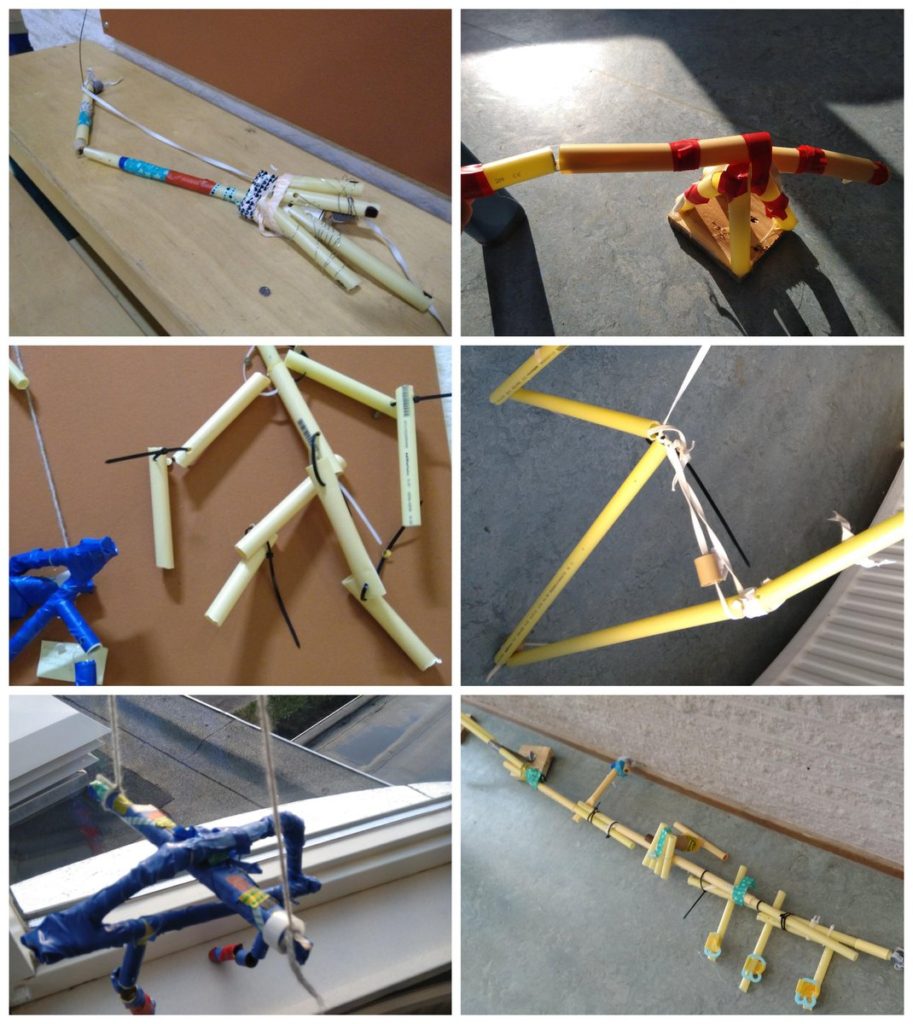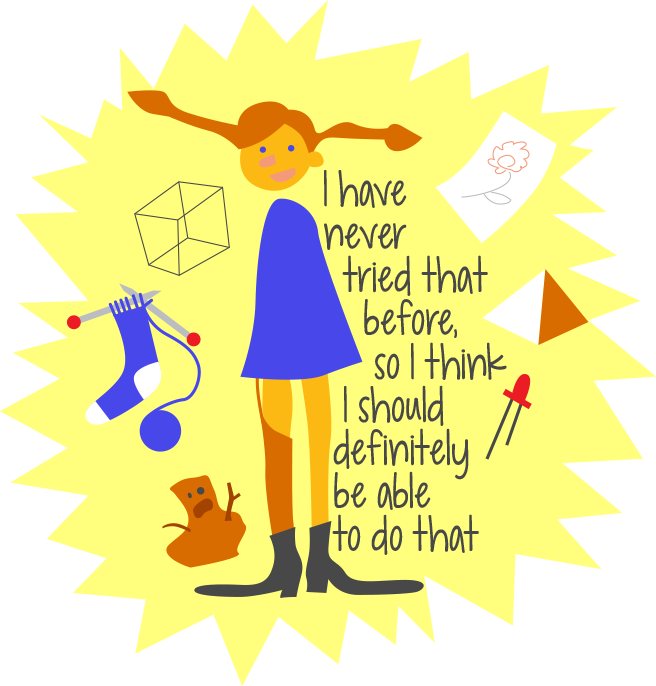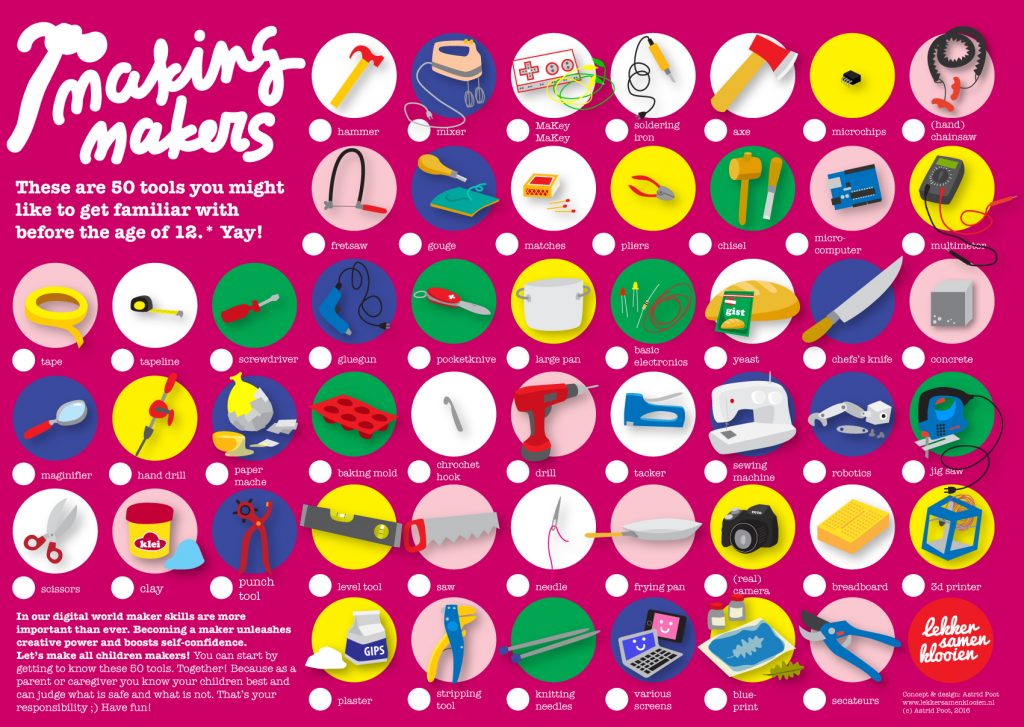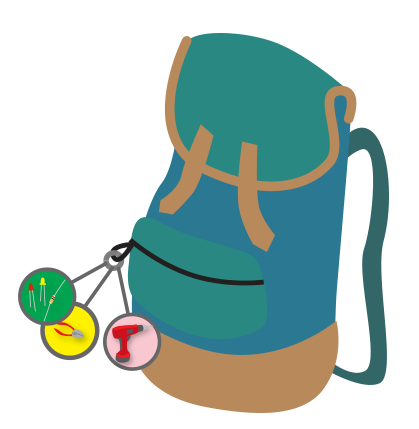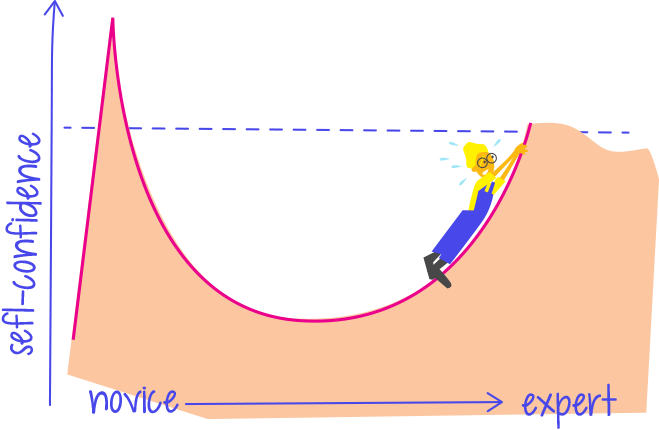I was visiting the Alan Turingschool in Amsterdam. A great school where making is an integrated part of the curriculum. (And they are also our partner in developing makered stuff.)
They just finished a theme about muscles and tension, inspired by artist Theo Jansens and his fantastic strandbeesten. Children were building their own strandbeest with pvc pipes, like Jansens.
Process – product
De kids had the best ideas, but ran into a lack of maker-skills in de realisation of their plans. What they envisioned as their product proved impossible to make. The process was great, but the products not exactly as beautiful as they should have been.
Drilling holes, sawing straight en glueing with a glue gun; when you never did it before, it’s kinda hard. And tie wraps? Mmm.
(Pictures: Martine, makered expert and teacher Alan Turingschool)
skills
In the first draft of our Bauhaus jr. (working titel) plan we explicitly make place for developing maker skills: kids first get to know a tool and start the actual making after that. I like that, because I am sure it will work.
But I also know it is hard to make time to just learn a tool. It is better when actual learning goals are achieved (STEM or art).
Learning to saw is not a goal. Learning about muscles and movement is. We discussed this dilemma at the Alan Turingschool. How can we arrange for the kids to make in context of the learning goals (learning about muscles and movement) using their well developed makers skills?
you want, so you can (?)
All makers love Pippi Longstocking.
You want it, so you can (learn). Many maker projects in schools are treating the mastering of tools like this. Wanting to achieve the goal (a creative product) will make the learning of the skills take place as an effect (sawing, drilling). A hundred birds with one stone.
This feels great, you want it to be true. But I don’t think it is. Although children may believe so.
Dunning-Kruger effect
Martine (makered expert and teacher at the Alan Turingschool) mentioned the Dunning-Kruger effect.
A novice may be very positive about his or her skills; the self confidence towards the new thing is massive. Like Pippi. Looks easy, I can do that!
But when you actually start learning the new thing, self confidence tends to drop once you understand it’s complexity.
It takes focus to get on the route to expert. Explicit attention to the learning, if even for a short while. Thus we can create skilled makers.
Learning properly
The mastering of a tool of technique cannot be only a side effect of a creative or stem project. I think we need to consider developing maker skills as necessary ingredients. Kids should have a library of skills in their heads and hands, they can use in realising their plans.
Library of skills
What if we’d offer the learning of the maker skills as separate little modules? A learn and practice session, to be expanded at will:
The (guided) learn and practice session can be done quickly and can easily be part of the projects’ flow.
Need to saw a tube? Do the learn and practice sawing-module!
By giving the learning and practicing an explicit place in the project we emphasise the value of skills and help children to be effective in realising their plans.
the Ingredients of a project
When starting a project, we can foresee the maker-skills the kids might need to make sure the outcome is great.
The mastery of these tools and techniques can be seen as ingredients of a project. And with the right ingredients, the kids will succeed! Just plan some learn and practice sessions as part of the project.
gotta catch them all!
When makers-skills are treated like this, the children learn in context, with the goal of the project in mind, relevant in that moment.
You may know my poster with 50 tools: to collect is to tick the boxes.
But collecting tools can also easily be part of a school-portfolio. (Or as keychains! But that is my personal fetish 😉
so far so … ehh … good?
As always: I welcome your feedback. whatever it may be.
And, no. I am still no expert. But I climb slowly. (And fall back again, no problem.)
Love!
